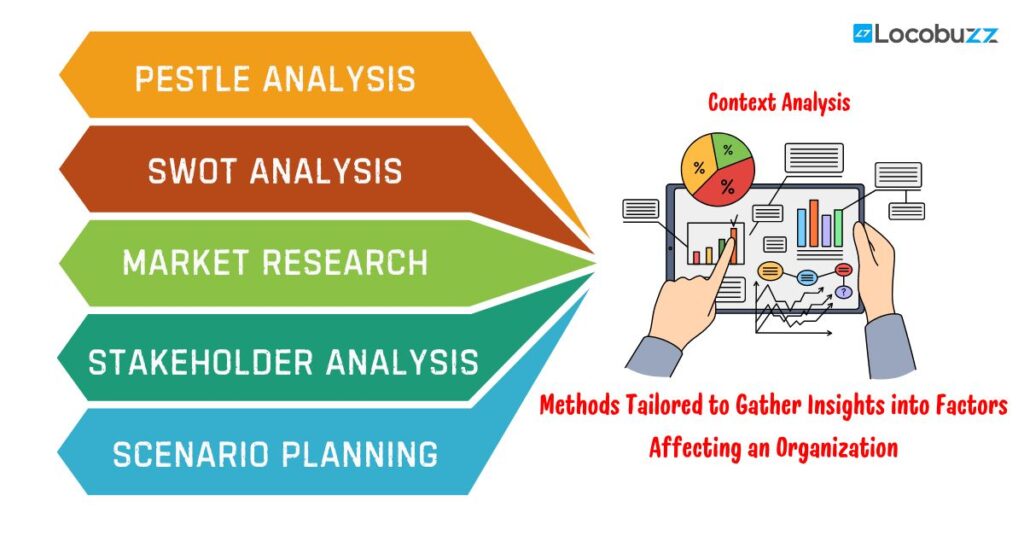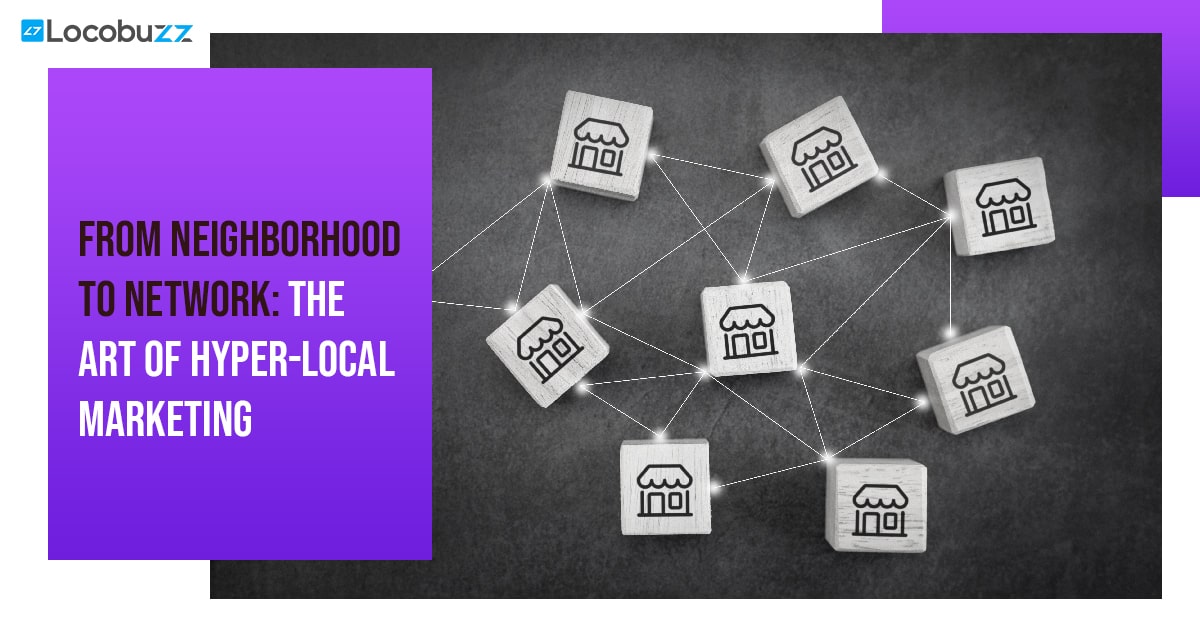What Is Context Analysis? Everything You Need To Know in 2024

Have you ever told a joke that no one laughed at because they didn’t get it? Or have you read a news story and felt like there was something missing? That’s because context analysis is missing! Context analysis is important because it helps us understand why things happen by looking at the bigger picture of the situation. It helps us understand the full meaning of what’s being said or written. This helps in making informed decisions and predicting potential outcomes more accurately.
Before we jump into how context analysis can supercharge your business, let’s take a quick step back. What exactly is context analysis? Let’s show you how it can be your secret weapon for success.
What is Context Analysis?
Context analysis is a method used to understand the broader situation surrounding a specific event, issue, or organization. It provides an overview of the external factors that impact an organization’s operations and success, helping it navigate its environment more effectively.
When we do a contextual analysis, we break down a complicated issue into smaller parts so we can understand it better. Things that get looked at include how the economy is doing, what’s happening in the industry, any new rules or laws, advances in technology, changes in society, and who the competition is. By doing this analysis, businesses can see what opportunities they have and what might cause problems, predict where the market is going, and make smart choices.
It’s about matching up business plans with what’s going on around them, avoiding risks, and being better than the competition. Also, by doing this analysis, businesses can figure out what their customers want and need, so they can make products and do marketing that fits well with what’s going on. In the end, understanding the context helps businesses stay flexible and do well even when things keep changing.
Why is it important?
Context analysis helps businesses understand how outside factors might affect their operations and performances. It is essential for planning and adapting to day to day changes effectively as market trends are evolving.
1) Seeing the bigger picture: It helps you understand not just your business itself, but also everything around it. This includes things like the economy, government laws, what your competitors are up to, and even what’s trending with customers these days. Basically, it’s like having a 360-degree view of your business world.
2) Spotting opportunities: By understanding the context, you can identify trends or gaps in the market that your business can take advantage of. Maybe there’s a new law that creates a need for a product you can offer, or perhaps customers are looking for something specific that your competitors aren’t providing.
3) Avoiding surprises: Context analysis helps you identify potential threats, like a new regulation that might make it harder to sell your product, or a shift in customer preferences that could leave you behind. By anticipating these challenges, you can be prepared to adapt and overcome them.
4) Staying ahead of the curve: The business world is constantly changing. By regularly conducting context analysis, you can stay on top of these changes and ensure your business stays relevant and competitive. It’s like having a roadmap that helps you navigate the evolving business industry.
Context analysis helps businesses make sense of the world around them, identify opportunities and threats, and ultimately make better decisions for success.
Content vs Context
Imagine you’re putting together a puzzle. The pieces themselves (the words or information) are the content. They’re important, but without the bigger picture (the context), it’s difficult to understand what they mean.
Content is the actual information or message being conveyed. It can be the words in a book, the images on a website, or the sounds in a song. It’s the “what” of communication.
Context, on the other hand, is the setting or circumstance surrounding the content that gives it meaning. It’s the “why” and “how” of communication. Context is like the frame of the puzzle. It tells you where each piece fits and what the final image will be. It includes things like the speaker’s tone, the situation you are in, your relationship with the person, and even past conversations.
Being a good communicator is like being a puzzle master. You need to consider both the content (the pieces) and the context (the frame) to make sure your message is clear and avoid misunderstandings. Choose your words carefully, consider the situation, and if you’re unsure, don’t be afraid to ask clarifying questions! The same goes for understanding others. Pay attention to the context to get the full picture and avoid jumping to conclusions.
Context includes things like:
1) The intended audience
2) The purpose of the communication
3) The situation in which communication is taking place
4) The background knowledge of the audience
When you create content, it’s important to consider the context in which it will be received. This will help you ensure that your message is clear, concise, and effective. Context can also influence how you interpret new information.
Stay ahead with evolving market trends with Locobuzz
5 Benefits of Context Analysis
Context analysis, for businesses, is basically taking a closer look at the “why” behind the “what.” It’s about understanding the bigger picture surrounding data and information. Here’s how it benefits businesses in a big way:
1) Targeted Marketing:
Imagine showing summer clothes ads to someone searching for winter boots! Context analysis helps avoid such misfires. By considering things like browsing history, location, and purchase patterns, businesses can target customers with relevant ads and promotions. This leads to happier customers, who are more likely to buy.
2) Personalized Customer Experience:
Remember that feeling of frustration when a website keeps recommending things you’d never buy? Context analysis can fix that. Businesses can use it to understand customer preferences and tailor recommendations, product suggestions, and even website layouts to individual needs. This creates a smoother and more enjoyable experience for the customer.
3) Better Decision Making:
Imagine having a mountain of data but no idea what it means. Context analysis helps businesses make sense of all that information. By understanding the context surrounding sales figures, customer feedback, and market trends, businesses can make informed decisions about things like product development, marketing strategies, and resource allocation.
4) Improved Communication:
Misunderstandings can be costly. Context analysis helps businesses understand the intent behind customer messages, social media comments, and even survey answers. This allows for clearer communication, reduces frustration, and helps build stronger relationships with customers.
5) Identify New Opportunities:
Sometimes, the most valuable insights are hidden within the data. Context analysis can help businesses uncover patterns and trends they might have missed otherwise. This can lead to the discovery of new customer segments, untapped markets, and innovative product ideas.
Context analysis helps businesses move beyond basic data to gain a deeper understanding of their customers, market, and overall operations. This translates to better decision-making, stronger relationships, and ultimately, a more successful business.

How to Conduct Context Analysis in 5 Steps
Context analysis is all about understanding the bigger picture. In business, success often hinges on understanding the world around you. Context analysis is a powerful tool that helps you do just that. It’s like taking a deep breath and getting a clear picture of everything that might affect your business. By following these steps, you can conduct a thorough context analysis and make informed decisions.
Step 1: Define the Topic
This might seem obvious, but it’s important to start with a clear focus for context analysis. When you are trying to understand something, the first step is to clearly decide what you are studying. Are you analyzing the market for a new product? Evaluating a potential partnership? The specific topic will guide the rest of your analysis. It might seem easy, but it’s super important to gather good information. That’s because how you understand something can change a lot depending on what you focus on.
For example, if you are studying a business, you could look at the industry it’s in, who it’s competing against, or the overall economy. Each of these ways of looking at the business would give you a different idea of what’s happening and what issues or chances it might face. So, it’s really important to be careful and choose exactly what you are examining before you start digging into it.
Step 2: Identify the Key Players (Stakeholders)
Stakeholders are individuals or groups who have an interest in something, such as a company or project. They can include employees, customers, shareholders, and the community. Stakeholders often have different needs and can influence decisions or outcomes. Considering their needs, interests, and potential influence is necessary.
First, find out who the important people are by looking at who has the most power and who might be affected the most. Then, include them in the planning by asking what they think the project should do and letting them decide things. This helps make sure the project works well and helps everyone involved.
Step 3: Spot the Trends
The way businesses operate is always changing. What are the big trends happening in your industry, technology, or the general economy? It’s really important to know what’s happening in your industry. Are there any social or environmental shifts that might affect your business? Keeping an eye on how society and the environment are changing can also affect how your business operates. Understanding trends helps you anticipate changes and adapt your strategies.
Businesses don’t operate in a vacuum. Trends signal shifts in technology, consumer behavior, and the overall economy. By understanding these shifts, you can anticipate future changes and adapt your strategies before they hit you head-on. Trends often open doors to new opportunities. Imagine a bakery noticing a growing trend towards healthy eating. They could capitalize on this by offering a line of sugar-conscious treats. Spotting trends helps you get ahead of the curve and potentially create new products or services that meet evolving customer needs.
Sometimes, trends can pose threats if you are not prepared. For instance, if a new technology disrupts your industry, being caught off guard can be disastrous. Identifying these trends early allows you to develop mitigation strategies and minimize potential risks.
Step 4: Analyze Your Competitors
Who are you competing with? What are their strengths and weaknesses? What are their marketing strategies, and how are they positioning themselves? By knowing your competitors, you can identify opportunities to differentiate yourself and gain an edge.
Context analysis is about studying your competitors to see what they’re good at and where they could do better. This helps you figure out how to be better than them. To do this, check out your competitors online. Look at them online and track what they are doing and what they aren’t. See what they are saying in their ads and how they talk to customers. This gives you a good idea of what you are up against and how you can stand out.
Step 5: Take Stock of Your Internal Environment
Don’t forget to look inward! Analyze your own business’s strengths and weaknesses. What resources do you have? What are your capabilities? An honest internal analysis helps you identify areas for improvement and leverage your existing assets.
SWOT analysis is a helpful tool to understand your business’s strengths, weaknesses, opportunities, and threats. By conducting a SWOT analysis, you can identify what your business is good at, where it might need improvement, what opportunities you can take advantage of, and what threats you might face from competitors or changes in the market.
When attempting to adjust to trends or foresee changes in your sector, technology, or economy, this information can be quite helpful. By assisting you in utilizing your strengths, addressing your weaknesses, seizing opportunities, and mitigating threats, SWOT analysis helps you make well-informed decisions that will ultimately improve your ability to navigate the corporate world.
Final Thoughts
The world is complicated, but context analysis can help! It’s like looking at the whole picture instead of just one piece. Context analysis helps us figure things out by looking at all the different aspects that affect a situation, like how people feel, how much money they have, what the government is doing, and what their culture is like. By doing this, we can learn a lot that can help us make better decisions, avoid problems, and make things better.






















